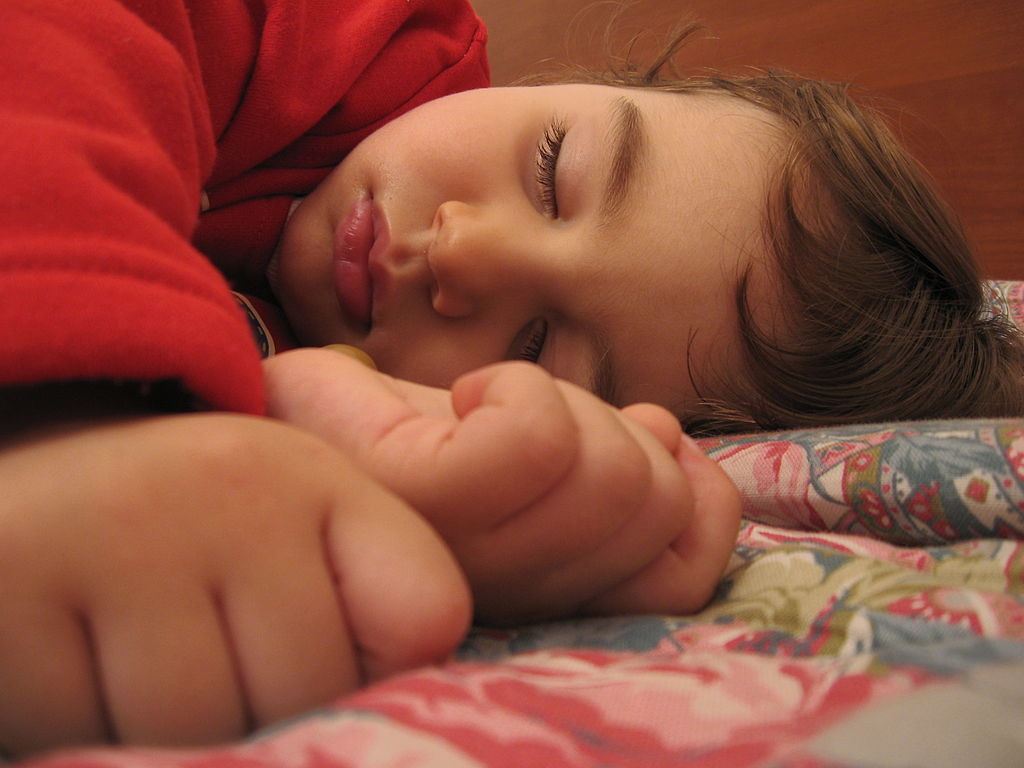Research reveals that children’s brain and body development happens while asleep and not while awake as one would think!
Since the dawn of time it has been recommended that children get long hours of sleep during the night and take frequent breaks during the day. But some parents might agree that it’s not easy to get a child to sleep peacefully all of the time.
Don’t fret! Below are some great tips to get your little angel get a good night’s rest repeatedly!
1. Make sleep time a ritual.
Children thrive with routine and it’s the parents’ responsibility to set it up for them. Every day, as put your child down for rest, sing good night rhymes while changing their clothes, or perhaps while giving them a warm bath. During this routine maybe comb their hair, darken the room, and place them in their bed. This routine will serve as a trigger to make your child immediately understand that the next activity is to sleep.
2. Comfortable sleep attire.
Though it is tempting to make your child wear old clothes for sleep time, it’s worth buying separate sleep attire. The right nightdress should be lightweight and cover your child’s body fully, thus eliminating the need for a blanket. Have two sets of night clothes—keep warm clothes during winter and light clothes for summer. If your child’s room is air-conditioned, a light blanket may be needed.
3. Ideal bed and furnishing.
Select the right bed and mattress for your child, as it plays a crucial part in making sleep time a pleasure. Make sure the material used is hypoallergenic as a child’s skin needs soft treatment, so selecting only the smoothest texture, and if possible, kid-friendly designs and illustrations. Always have a rug on either side of the bed, so that if your child falls off the bed, the rug lessens the impact.
4. Ideal sleep environment.
Many parents expect their children to fall asleep just because it is time to do so. Children are not mature enough to understand that and need the right environment to fall asleep. Teach your child to fall asleep without fear of dark—still, their room should have a dim night lamp within their reach. Also, make sure the fan runs on a comfortable speed—not too slow or fast. If the AC is on, set the timer so that the AC switches off by itself if the room gets too cold.
5. Sleep toys for comfort.
The power of physical touch is universally known. Young children tend to be insecure and scared of being alone so a good solution is to give them security-assuring objects to hold during sleep time, like a doll, a soft toy, or a favorite pillow. If your kid is older and yet has trouble sleeping at night, consider giving her a life-sized doll of their favorite cartoon character as their sleep buddy.
6. Bedtime entertainment.
This is a relatively modern method to make sleep time enjoyable, but it is quite effective. For extra-active kids who refuse to wind down, consider allowing them to watch “relax and go to bed” program on the TV, your phone or iPad. There are many e-apps available on the internet—your cable TV will also will have a dedicated baby channel.
7. Storytelling session.
If you do not want to use technology during bedtime—or if your child is one of the few ones who get over-stimulated by watching TV—the best alternative is to read a book. There are hundreds of picture books available, depicting stories that make sleep time both relaxing and fun. Read to your child after they get into bed. It will also sharpen their memory and enhance the imagination power. This story telling tradition will be something both you and your child will treasure all your lives.
8. Light meals before sleep.
Binging or eating rich food is a bad idea for all age groups—and is especially not recommended for young children. Make sure you provide a light, nutritious meal to your child before their bedtime. Rather than rice or complex foods, stick to salads, soups, bread or chapatti, with a glass of warm milk sweetened with organic honey. In addition, don’t forget, there should be optimum time gap between your child’s dinner or snacks and his bedtime.
9. Guard against nightmares.
Bad dreams are often triggered by real-life events such as doctor visits or accidents. “Nightmares are actually good for a child. They’re a way to process and make sense of both real and imaginary fears, which enables him to deal with them,” says pediatrician Alan Greene, M.D., author of From First Kicks to First Steps. If a nightmare wakes up your kid, comfort him and tuck him back into bed. Next day, gently influence him to draw pictures or tell stories to work through the underlying issues. This will help him shed his sub-conscious fears, thereby making his sleep time easier.
10. It takes everyone.
Yes, it does take a village to raise a child! It will not help if you are trying to put your child sleep while your spouse or other family member is watching TV in the next room. During the child’s formative years, the entire family should co-operate to make life a reliable routine for them. Otherwise, a child may get confused and may not accept or learn the habits you want to teach them. If you have any issues making your family agree to this, perhaps it is time to have a family meeting and take some decisions.
If you have employed most of the tips and still your child does not have good sleep every day, then you should take measures. There is the possibility that your child may have genuine sleep disorder, deep rooted in some phobia or even physical malady. This should not be taken lightly and we advise you to immediately consult your doctor for a diagnosis.
Love elephant and want to go steady?
Sign up for our (curated) daily and weekly newsletters!
Apprentice Editor: Jessica Sandhu/Editor: Renée Picard
Photos: Wikimedia







Read 2 comments and reply